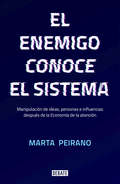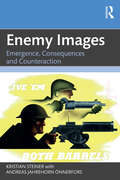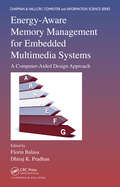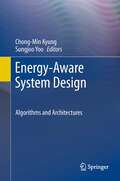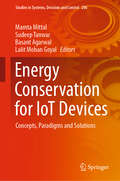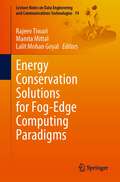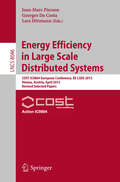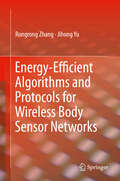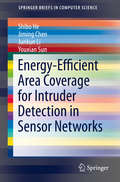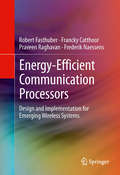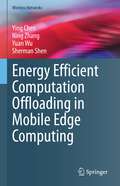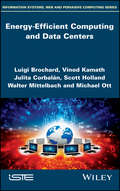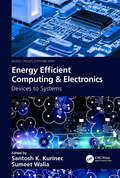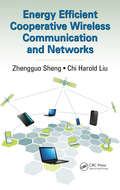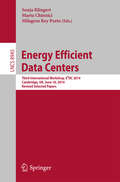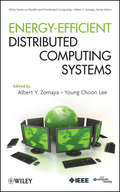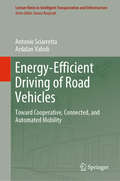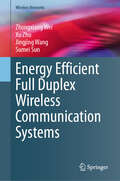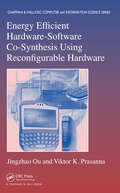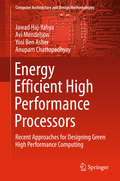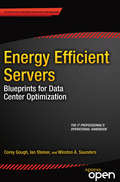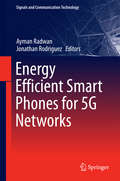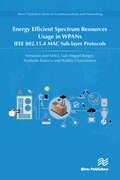- Table View
- List View
El enemigo conoce el sistema: Manipulación de ideas, personas e influencias después de la economía de la atención
by Marta PeiranoTodo lo que no quieres pero necesitas saber sobre el poder, la economía, la sociedad y las telecomunicaciones en la era de la información. La red no es libre, ni abierta ni democrática. Es un conjunto de servidores, conmutadores, satélites, antenas, routers y cables de fibra óptica controlados por un número cada vez más pequeño de empresas. Es un lenguaje y una burocracia de protocolos que hacen que las máquinas hablen, normas de circulación que conducen el tráfico, microdecisiones que definen su eficiencia. Si la consideramos un único proyecto llamado internet, podemos decir que es la infraestructura más grande jamás construida, y el sistema que define todos los aspectos de nuestra sociedad. Y sin embargo es secreta. Su tecnología está oculta, enterrada, sumergida o camuflada; sus algoritmos son opacos; sus microdecisiones son irrastreables. Los centros de datos que almacenan y procesan la información están ocultos y protegidos por armas, criptografía, propiedad intelectual y alambre de espino. La infraestructura crítica de nuestro tiempo está fuera de nuestra vista. No podemos comprender la lógica, la intención y el objetivo de lo que no vemos. Todas las conversaciones que tenemos sobre esa infraestructura son en realidad conversaciones sobre su interfaz, un conjunto de metáforas que se interpone entre nosotros y el sistema. Un lenguaje diseñado, no para facilitar nuestra comprensión de esa infraestructura, sino para ofuscarla. El enemigo conoce el sistema pero nosotros no. Este libro te ayudará a conocerlo, y a comprender por qué la herramienta más democratizadora de la historia se ha convertido en una máquina de vigilancia y manipulación de masas al servicio de regímenes autoritarios. Solo así podremos convertirla en lo que más falta nos hace: una herramienta para gestionar la crisis que se avecina de la manera más humana posible. No tenemos un segundo que perder.
Enemy Images: Emergence, Consequences and Counteraction
by Kristian Steiner Andreas ÖnnerforsThis book offers a detailed understanding of ‘enemy images’, which are used in political rhetoric to dehumanize adversaries for various purposes, such as to legitimate violent conflicts.Applying theoretical models to a strong catalogue of historical and recent examples – from blood libel narratives in medieval manuscripts, to state-sponsored children’s board games in Nazi Germany and social media posts about the wars in Gaza and Ukraine – the book identifies how ‘enemy images’ have led to the development of dominant socio-political paradigms by providing justifications for and reinforcements of violent conflicts both within and between societies. In doing so, the work offers an up-to-date, accessible and authoritative overview of how to identify, analyse, and counteract energy images – which will be key to fostering social environments of reconciliation and peacebuilding for the future.This book will be of much interest to students and scholars of peace and conflict studies, International Relations, history, political sociology, and communication studies.
Energy-Aware Memory Management for Embedded Multimedia Systems: A Computer-Aided Design Approach (Chapman & Hall/CRC Computer and Information Science Series)
by Florin Balasa Dhiraj K. PradhanEnergy-Aware Memory Management for Embedded Multimedia Systems: A Computer-Aided Design Approach presents recent computer-aided design (CAD) ideas that address memory management tasks, particularly the optimization of energy consumption in the memory subsystem. It explains how to efficiently implement CAD solutions, including theoretical methods an
Energy-Aware System Design
by Chong-Min Kyung Sungjoo YooPower consumption becomes the most important design goal in a wide range of electronic systems. There are two driving forces towards this trend: continuing device scaling and ever increasing demand of higher computing power. First, device scaling continues to satisfy Moore's law via a conventional way of scaling (More Moore) and a new way of exploiting the vertical integration (More than Moore). Second, mobile and IT convergence requires more computing power on the silicon chip than ever. Cell phones are now evolving towards mobile PC. PCs and data centers are becoming commodities in house and a must in industry. Both supply enabled by device scaling and demand triggered by the convergence trend realize more computation on chip (via multi-core, integration of diverse functionalities on mobile SoCs, etc.) and finally more power consumption incurring power-related issues and constraints. Energy-Aware System Design: Algorithms and Architectures provides state-of-the-art ideas for low power design methods from circuit, architecture to software level and offers design case studies in three fast growing areas of mobile storage, biomedical and security. Important topics and features: - Describes very recent advanced issues and methods for energy-aware design at each design level from circuit and architecture to algorithm level, and also covering important blocks including low power main memory subsystem and on-chip network at architecture level - Explains efficient power conversion and delivery which is becoming important as heterogeneous power sources are adopted for digital and non-digital parts - Investigates 3D die stacking emphasizing temperature awareness for better perspective on energy efficiency - Presents three practical energy-aware design case studies; novel storage device (e.g., solid state disk), biomedical electronics (e.g., cochlear and retina implants), and wireless surveillance camera systems. Researchers and engineers in the field of hardware and software design will find this book an excellent starting point to catch up with the state-of-the-art ideas of low power design.
Energy Conservation for IoT Devices: Concepts, Paradigms and Solutions (Studies in Systems, Decision and Control #206)
by Mamta Mittal Sudeep Tanwar Basant Agarwal Lalit Mohan GoyalThis book addresses the Internet of Things (IoT), an essential topic in the technology industry, policy, and engineering circles, and one that has become headline news in both the specialty press and the popular media. The book focuses on energy efficiency concerns in IoT and the requirements related to Industry 4.0. It is the first-ever “how-to” guide on frequently overlooked practical, methodological, and moral questions in any nations’ journey to reducing energy consumption in IoT devices. The book discusses several examples of energy-efficient IoT, ranging from simple devices like indoor temperature sensors, to more complex sensors (e.g. electrical power measuring devices), actuators (e.g. HVAC room controllers, motors) and devices (e.g. industrial circuit-breakers, PLC for home, building or industrial automation). It provides a detailed approach to conserving energy in IoT devices, and comparative case studies on performance evaluation metrics, state-of-the-art approaches, and IoT legislation.
Energy Conservation Solutions for Fog-Edge Computing Paradigms (Lecture Notes on Data Engineering and Communications Technologies #74)
by Rajeev Tiwari Mamta Mittal Lalit Mohan GoyalThis book focuses on energy efficiency concerns in fog–edge computing and the requirements related to Industry 4.0 and next-generation networks like 5G and 6G. This book guides the research community about practical approaches, methodological, and moral questions in any nations’ journey to conserve energy in fog–edge computing environments. It discusses a detailed approach required to conserve energy and comparative case studies with respect to various performance evaluation metrics, such as energy conservation, resource allocation strategies, task allocation strategies, VM migration, and load-sharing strategies with state-of-the-art approaches, with fog and edge networks.
Energy Efficiency: Real Time Energy Infrastructure Investment and Risk Management
by Leslie A. SolmesENERGY EFFICIENCY uses an applied scientific methodology and case studies to demonstrate and support: The need for the U.S. and the world to commit to energy and resource efficiency as the central goal in investing in electric, heat, and cooling infrastructure, the huge economic opportunity for using the inefficiency built into 20th century energy supply systems, especially, electric, to pay for the upgrades, replacements, and new production and distribution systems of the 21st century, the importance of adopting a standard, web-based energy infrastructure investment decision-making and risk management tool that will serve as a communication medium for all stakeholders to evaluate and compare energy infrastructure investment options and manage investment risks, expansions of the U.S. 'smart' grid investment to include evaluation and risk management of energy systems infrastructure investments not just electricity operations, the need to adopt a 'framework' for utilities, energy service companies, and customers to work together to close business deals, communicate and manage risks, and realize profits.
Energy Efficiency and Robustness of Advanced Machine Learning Architectures: A Cross-Layer Approach (Chapman & Hall/CRC Artificial Intelligence and Robotics Series)
by Alberto Marchisio Muhammad ShafiqueMachine Learning (ML) algorithms have shown a high level of accuracy, and applications are widely used in many systems and platforms. However, developing efficient ML-based systems requires addressing three problems: energy-efficiency, robustness, and techniques that typically focus on optimizing for a single objective/have a limited set of goals.This book tackles these challenges by exploiting the unique features of advanced ML models and investigates cross-layer concepts and techniques to engage both hardware and software-level methods to build robust and energy-efficient architectures for these advanced ML networks. More specifically, this book improves the energy efficiency of complex models like CapsNets, through a specialized flow of hardware-level designs and software-level optimizations exploiting the application-driven knowledge of these systems and the error tolerance through approximations and quantization. This book also improves the robustness of ML models, in particular for SNNs executed on neuromorphic hardware, due to their inherent cost-effective features. This book integrates multiple optimization objectives into specialized frameworks for jointly optimizing the robustness and energy efficiency of these systems.This is an important resource for students and researchers of computer and electrical engineering who are interested in developing energy efficient and robust ML.
Energy Efficiency in Large Scale Distributed Systems
by Jean-Marc Pierson Georges Da Costa Lars DittmannThis book constitutes revised selected papers from the Conference on Energy Efficiency in Large Scale Distributed Systems, EE-LSDS, held in Vienna, Austria, in April 2013. It served as the final event of the COST Action IC0804 which started in May 2009. The 15 full papers presented in this volume were carefully reviewed and selected from 31 contributions. In addition, 7 short papers and 3 demo papers are included in this book. The papers are organized in sections named: modeling and monitoring of power consumption; distributed, mobile and cloud computing; HPC computing; wired and wireless networking; and standardization issues.
Energy-Efficient Algorithms and Protocols for Wireless Body Sensor Networks
by Rongrong Zhang Jihong YuThis book provides a systematic treatment of the theoretical foundation and algorithmic tools necessary in the design of energy-efficient algorithms and protocols in wireless body sensor networks (WBSNs). These problems addressed in the book are of both fundamental and practical importance. Specifically, the book delivers a comprehensive treatment on the following problems ranging from theoretical modeling and analysis, to practical algorithm design and optimization: energy-efficient clustering-based leader election algorithms in WBSNs; MAC protocol for duty-cycling WBSNs with concurrent traffic; multi-channel broadcast algorithms in duty-cycling WBSNs; and energy-efficient sleep scheduling algorithms in WBSNs. Target readers of the book are researchers and advanced-level engineering students interested in acquiring in-depth knowledge on the topic and on WBSNs and their applications, both from theoretical and engineering perspective.
Energy-Efficient Area Coverage for Intruder Detection in Sensor Networks
by Shibo He Jiming Chen Junkun Li Youxian SunThis Springer Brief presents recent research results on area coverage for intruder detection from an energy-efficient perspective. These results cover a variety of topics, including environmental surveillance and security monitoring. The authors also provide the background and range of applications for area coverage and elaborate on system models such as the formal definition of area coverage and sensing models. Several chapters focus on energy-efficient intruder detection and intruder trapping under the well-known binary sensing model, along with intruder trapping under the probabilistic sensing model. The brief illustrates efficient algorithms rotate the duty of each sensor to prolong the network lifetime and ensure intruder trapping performance. The brief concludes with future directions of the field. Designed for researchers and professionals working with wireless sensor networks, the brief also provides a wide range of applications which are also valuable for advanced-level students interested in efficiency and networking.
Energy-Efficient Communication Processors
by Praveen Raghavan Francky Catthoor Frederik Naessens Robert FasthuberThis book describes a new design approach for energy-efficient, Domain-Specific Instruction set Processor (DSIP) architectures for the wireless baseband domain. The innovative techniques presented enable co-design of algorithms, architectures and technology, for efficient implementation of the most advanced technologies. To demonstrate the feasibility of the author's design approach, case studies are included for crucial functionality of advanced wireless systems with increased computational performance, flexibility and reusability. Designers using this approach will benefit from reduced development/product costs and greater scalability to future process technology nodes.
Energy Efficient Computation Offloading in Mobile Edge Computing (Wireless Networks)
by Ying Chen Ning Zhang Yuan Wu Sherman ShenThis book provides a comprehensive review and in-depth discussion of the state-of-the-art research literature and propose energy-efficient computation offloading and resources management for mobile edge computing (MEC), covering task offloading, channel allocation, frequency scaling and resource scheduling. Since the task arrival process and channel conditions are stochastic and dynamic, the authors first propose an energy efficient dynamic computing offloading scheme to minimize energy consumption and guarantee end devices’ delay performance. To further improve energy efficiency combined with tail energy, the authors present a computation offloading and frequency scaling scheme to jointly deal with the stochastic task allocation and CPU-cycle frequency scaling for minimal energy consumption while guaranteeing the system stability. They also investigate delay-aware and energy-efficient computation offloading in a dynamic MEC system with multiple edge servers, and introduce an end-to-end deep reinforcement learning (DRL) approach to select the best edge server for offloading and allocate the optimal computational resource such that the expected long-term utility is maximized. Finally, the authors study the multi-task computation offloading in multi-access MEC via non-orthogonal multiple access (NOMA) and accounting for the time-varying channel conditions. An online algorithm based on DRL is proposed to efficiently learn the near-optimal offloading solutions.Researchers working in mobile edge computing, task offloading and resource management, as well as advanced level students in electrical and computer engineering, telecommunications, computer science or other related disciplines will find this book useful as a reference. Professionals working within these related fields will also benefit from this book.
Energy-Efficient Computing and Data Centers: Energy Efficient Computing And Data Centers
by Luigi Brochard Vinod Kamath Julita Corbalán Scott Holland Walter Mittelbach Michael OttData centers consume roughly 1% of the total electricity demand, while ICT as a whole consumes around 10%. Demand is growing exponentially and, left unchecked, will grow to an estimated increase of 20% or more by 2030. This book covers the energy consumption and minimization of the different data center components when running real workloads, taking into account the types of instructions executed by the servers. It presents the different air- and liquid-cooled technologies for servers and data centers with some real examples, including waste heat reuse through adsorption chillers, as well as the hardware and software used to measure, model and control energy. It computes and compares the Power Usage Effectiveness and the Total Cost of Ownership of new and existing data centers with different cooling designs, including free cooling and waste heat reuse leading to the Energy Reuse Effectiveness. The book concludes by demonstrating how a well-designed data center reusing waste heat to produce chilled water can reduce energy consumption by roughly 50%, and how renewable energy can be used to create net-zero energy data centers.
Energy Efficient Computing & Electronics: Devices to Systems (Devices, Circuits, and Systems)
by Krzysztof Iniewski, Santosh K. Kurinec and Sumeet WaliaIn our abundant computing infrastructure, performance improvements across most all application spaces are now severely limited by the energy dissipation involved in processing, storing, and moving data. The exponential increase in the volume of data to be handled by our computational infrastructure is driven in large part by unstructured data from countless sources. This book explores revolutionary device concepts, associated circuits, and architectures that will greatly extend the practical engineering limits of energy-efficient computation from device to circuit to system level. With chapters written by international experts in their corresponding field, the text investigates new approaches to lower energy requirements in computing. Features • Has a comprehensive coverage of various technologies • Written by international experts in their corresponding field • Covers revolutionary concepts at the device, circuit, and system levels
Energy Efficient Cooperative Wireless Communication and Networks
by Zhengguo Sheng Chi Harold LiuCompared with conventional communications, cooperative communication allows multiple users in a wireless network to coordinate their packet transmissions and share each other's resources, thus achieving high-performance gain and better service coverage and reliability. Energy Efficient Cooperative Wireless Communication and Networks provides a comp
Energy Efficient Data Centers
by Sonja Klingert Marta Chinnici Milagros Rey PortoThis book constitutes the thoroughly refereed post-conference proceedings of the Third International Workshop on Energy Efficient Data Centers, E2DC 2014, held in Cambridge, UK, in June 2014. The 10 revised full papers presented were carefully selected from numerous submissions. They are organized in three topical sections named: energy optimization algorithms and models, the future role of data centres in Europe and energy efficiency metrics for data centres.
Energy-Efficient Distributed Computing Systems
by Albert Y. Zomaya Young-Choon LeeThe energy consumption issue in distributed computing systems raises various monetary, environmental and system performance concerns. Electricity consumption in the US doubled from 2000 to 2005. From a financial and environmental standpoint, reducing the consumption of electricity is important, yet these reforms must not lead to performance degradation of the computing systems. These contradicting constraints create a suite of complex problems that need to be resolved in order to lead to 'greener' distributed computing systems. This book brings together a group of outstanding researchers that investigate the different facets of green and energy efficient distributed computing. Key features: One of the first books of its kind Features latest research findings on emerging topics by well-known scientists Valuable research for grad students, postdocs, and researchers Research will greatly feed into other technologies and application domains
Energy-Efficient Driving of Road Vehicles: Toward Cooperative, Connected, and Automated Mobility (Lecture Notes in Intelligent Transportation and Infrastructure)
by Antonio Sciarretta Ardalan VahidiThis book elaborates the science and engineering basis for energy-efficient driving in conventional and autonomous cars. After covering the physics of energy-efficient motion in conventional, hybrid, and electric powertrains, the book chiefly focuses on the energy-saving potential of connected and automated vehicles. It reveals how being connected to other vehicles and the infrastructure enables the anticipation of upcoming driving-relevant factors, e.g. hills, curves, slow traffic, state of traffic signals, and movements of nearby vehicles. In turn, automation allows vehicles to adjust their motion more precisely in anticipation of upcoming events, and to save energy. Lastly, the energy-efficient motion of connected and automated vehicles could have a harmonizing effect on mixed traffic, leading to additional energy savings for neighboring vehicles. Building on classical methods of powertrain modeling, optimization, and optimal control, the book further develops the theory of energy-efficient driving. In addition, it presents numerous theoretical and applied case studies that highlight the real-world implications of the theory developed. The book is chiefly intended for undergraduate and graduate engineering students and industry practitioners with a background in mechanical, electrical, or automotive engineering, computer science or robotics.
Energy Efficient Full Duplex Wireless Communication Systems (Wireless Networks)
by Zhongxiang Wei Xu Zhu Jingjing Wang Sumei SunIn an effort to overcome the spectral efficiency loss and high latency by half-duplex (HD), full-duplex (FD) has attracted extensive attention in industry and academia. With signal transmitted and received simultaneously over the same frequency, FD can approximately double the SE over HD. More than that, by enabling the capability of simultaneous transmission-and-reception for communication nodes, full duplex (FD) is a key enabler for many 5G techniques, including but not limited to integrated sensing and communication, low-latency relaying, concurrent bi-directional uplink and downlink transmission, ect. Nevertheless, in FD communications, both transmit and receive radio frequency (RF) chains are activated for exchanging data, and additional power is triggered by self-interference cancellation. As FD requires much higher power consumption than that of half duplex (HD), it is against the green evolution requirement proposed by the future communication systems. To address the critical high-power challenge in applying FD communications, this book will introduce the fundamentals and algorithm designs for energy-efficient FD design. This book will first discuss the principle of energy-efficient communications, which aims to make a good balance between communication performance and system energy consumption. Then, this book will discuss different self-interference cancellation schemes, including passive suppression, analogue cancellation and digital cancellation for FD communications, from the prospective of energy efficiency. Subsequently, this book will present some edge-cutting energy efficiency-oriented FD solutions, including adaptive transmission power adaptation, wireless power transfer FD relaying, bi-directional FD distributed antenna systems, from the perspective of algorithm design and performance analysis.
Energy Efficient Hardware-Software Co-Synthesis Using Reconfigurable Hardware (Chapman & Hall/CRC Computer and Information Science Series)
by Jingzhao Ou Viktor K. PrasannaRapid energy estimation for energy efficient applications using field-programmable gate arrays (FPGAs) remains a challenging research topic. Energy dissipation and efficiency have prevented the widespread use of FPGA devices in embedded systems. Helping overcome these challenges, this book offers solutions for the development of energy efficient applications using FPGAs. It provides a framework for high-level hardware-software application development, describes energy performance modeling for reconfigurable system-on-chip devices, and explores energy efficient designs for various applications. The authors present a two-step rapid energy estimation technique that enables high-level design space exploration and offer a hardware-software design for energy efficient implementations of operating systems.
Energy Efficient High Performance Processors: Recent Approaches For Designing Green High Performance Computing (Computer Architecture and Design Methodologies)
by Jawad Haj-Yahya Avi Mendelson Yosi Ben Asher Anupam ChattopadhyayThis book explores energy efficiency techniques for high-performance computing (HPC) systems using power-management methods. Adopting a step-by-step approach, it describes power-management flows, algorithms and mechanism that are employed in modern processors such as Intel Sandy Bridge, Haswell, Skylake and other architectures (e.g. ARM). Further, it includes practical examples and recent studies demonstrating how modem processors dynamically manage wide power ranges, from a few milliwatts in the lowest idle power state, to tens of watts in turbo state. Moreover, the book explains how thermal and power deliveries are managed in the context this huge power range. The book also discusses the different metrics for energy efficiency, presents several methods and applications of the power and energy estimation, and shows how by using innovative power estimation methods and new algorithms modern processors are able to optimize metrics such as power, energy, and performance. Different power estimation tools are presented, including tools that break down the power consumption of modern processors at sub-processor core/thread granularity. The book also investigates software, firmware and hardware coordination methods of reducing power consumption, for example a compiler-assisted power management method to overcome power excursions. Lastly, it examines firmware algorithms for dynamic cache resizing and dynamic voltage and frequency scaling (DVFS) for memory sub-systems.
Energy Efficient Servers: Blueprints for Data Center Optimization
by Corey Gough Ian Steiner Winston SaundersEnergy Efficient Servers: Blueprints for Data Center Optimization introduces engineers and IT professionals to the power management technologies and techniques used in energy efficient servers. The book includes a deep examination of different features used in processors, memory, interconnects, I/O devices, and other platform components. It outlines the power and performance impact of these features and the role firmware and software play in initialization and control. Using examples from cloud, HPC, and enterprise environments, the book demonstrates how various power management technologies are utilized across a range of server utilization. It teaches the reader how to monitor, analyze, and optimize their environment to best suit their needs. It shares optimization techniques used by data center administrators and system optimization experts at the world's most advanced data centers. What you'll learn * Develop a deep understanding of power management in modern servers - from data center and systems software to low-level processor technologies - and all the pieces in-between. * Build an understanding of technologies used in cores, caches, memory, system agents, processor interconnects, and PCI-E to manage power. * Learn techniques for monitoring and characterizing server power management technologies including component and system level impact. * Develop strategies to improve infrastructure utilization and cost-effectiveness, to guide configuration and purchasing decisions, and to enhance application deployment. * Learn new techniques to optimize a server for energy efficiency while still meeting the service level requirements of software, related systems in the data center, and end customers. Who this book is for Primarily: Engineers and IT professionals. More broadly, the book appeals to a wide technologist audience - anyone who designs or relies on a server to run services and applications - from software engineers, to system administrators, to equipment and system manufacturers, to data center operators. Table of Contents Foreword/Preface Chapter 1: Why Data Center Efficiency Matters Chapter 2: CPU and Memory Power Management Chapter 3: Memory and I/O Power Management Chapter 4: Software Architecture Chapter 5: BIOS and Management Firmware Chapter 6: Operating Systems Chapter 7: Monitoring Chapter 8: Characterization and Optimization Chapter 9: Data Center Management Chapter 10: Terms and Technology Appendix
Energy Efficient Smart Phones for 5G Networks
by Ayman Radwan Jonathan RodriguezThis book addresses current technology trends and requirements leading towards the next era in mobile communication handsets; and beyond that the book proposes innovative solutions that could be candidate solutions for 5G phones. It adopts a multidisciplinary and interdisciplinary stance towards handset design, a necessary ingredient if 5th Generation handset and services are to really take-off. Therefore the scope of the book targets a broad range of subjects, including energy efficiency, RF design, cooperation, context-aware systems, roaming, and short-range networking, all of which working in synergy to provide seamless mobility and high speed connectivity within a HetNet environment. Specifically, the authors investigate how we can exploit the cooperation paradigm and context-aware mechanism working in synergy to provide energy compliant phones that can introduce power savings of up to 50% on state-of-the-art. Going beyond this, a chapter on business modeling approaches is also included, based on incentive mechanisms for cooperation that will provide the necessary leverage to promote the up-take of the proposed technology.
Energy Efficient Spectrum Resources Usage in WPANs: IEEE 82.15.4 MAC Sub-layer Protocols (River Publishers Series in Communications and Networking)
by Luís Miguel Borges Norberto Barroca Periklis Chatzimisios Fernando José VelezWireless Sensor Networks (WSNs) and the Internet of Things are facing tremendous advances both in terms of energy-efficiency as well as in the number of available applications. Consequently, there are challenges that need to be tackled for the future generation of WSNs. After giving an overview of the WSN protocols and IEEE 802.15.4 standard, this book proposes IEEE 802.15.4 Medium Access Control (MAC) sub-layer performance enhancements by employing not only RTS/CTS combined with packet concatenation but also scheduled channel poling (MC-SCP). Results have shown that the use of the RTS/CTS mechanism improves channel efficiency by decreasing the deferral time before transmitting a data packet. Furthermore, the Sensor Block Acknowledgment MAC (SBACK-MAC) protocol enables more efficiency as it allows the aggregation of several acknowledgement responses in one special Block Acknowledgment (BACK) Response packet. The throughput and delay performance have been mathematically derived under both ideal conditions (a channel environment with no transmission errors) and non-ideal conditions (with transmission errors). Simulation results successfully validate the proposed analytical models. This research reveals the importance of an appropriate design for the MAC sub-layer protocol for the desired WSN application. Depending on the mission of the WSN application, different protocols are required. Therefore, the overall performance of a WSN application certainly depends on the development and application of suitable e.g., MAC, network layer protocols.
